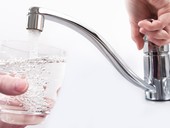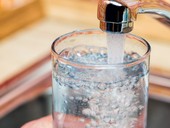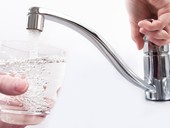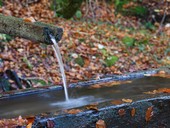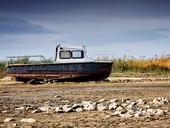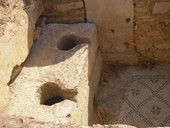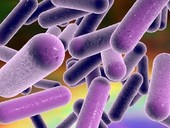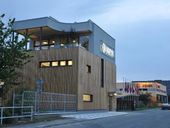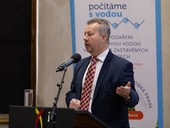The article summarises the legal requirements on the water treatment plants, which use ground water as a source. These treatment plants belong among the naturally occurring radioactive material (NORM) industries. There is a legal obligation to measure and assess the natural radionuclides in drinking water produced. According to the new law no. 263/2016 Coll. (nuclear law) and the executive acts, further obligations were set on the water treatment plant operators. These obligations concern evidence, measurement and assessment of radionuclides in the materials released from the plant, which mostly concerns wastewater, sludge or filter bed materials. On the example of three ground water treatment plants, the measured content of natural radionuclides in sludge is presented.
Archiv článků od 10.11.2018 do 19.8.2019
Taste-and-odour compounds reduced the availability and quality of surface water for drinking are commonly found in surface water. These compounds are produced by microorganisms, i.e. bacteria, cyanobacteria etc., and very often found are geosmin (earthy flavour) and 2-methylisoborneol (2-MIB, mildewed flavour). Geosmin and 2-MIB are not removed by standard water treatment technologies and require very specific management and usage of supplementary treatment. Paper deals with the character of geosmin and 2-MIB, their occurrence in environment, therefore suitable methods of detection and technological management in drinking water treatment technologies.
Due to the combination of electron conductivity in metals, ionic conductivity in rock environment together with bacterial activity in groundwater, and pumping of water from the well an increasing clogging occurs in the circumference of wells equipped with steel casing. This is why I do not recommend to equip wells with metallic and especially stainless steel casing. It is critical that metallic objects connecting the aerobic and anoxic zones are not used in wells equipped with electrically non-conductive casing. This particularly applies to the displacements of pumps and for the ground conductor. To suppress well clogging, it is therefore necessary to avoid connection of the ground conductor of the pump to the ground system.
The article deals with the problems of selected water treatment plants in Slovakia, their inconvenient technical condition and with deteriorative water quality in water reservoirs. In the most cases solution of this situation is in modernization of existing water treatment plants so that to be filled the aim of DWD 98/83/EC to protect human health from the adverse effects of any contamination of water intended for human consumption by ensuring its safety.
The aim of the paper is to draw attention to the broader context of increased nitrate concentrations in the Březová nad Svitavou water source, which is the largest source of underground drinking water in the Czech Republic. It supplies the Brno agglomeration and other surrounding municipalities with quality drinking water with a total volume of 27 million cubic meter per year. Based on the results of the experiments carried out so far, it is possible to describe some undesirable effects of soil degradation caused by the long-term use and overuse of industrial nitrogen fertilizers. There are adverse changes in physical, chemical and biological characteristics. The subsoil is compacted, it is difficult for crops to penetrate into greater depths, the root system is deformed, and as a result the plants are more sensitive to drought. The easiest solution in this most vulnerable area would be to change conventional farming into organic one. If there would be not enough goodwill and necessary resources for this change, the authors of the study recommend a significant, if not complete, reduction of mineral fertilization and the maximum possible reduction of applications of plant protection products. Missing nutrients could be delivered through compost, possibly through composted biochar, by changing of crop rotation, by multi-species intercrops or covercrops, etc. In the proposed modifications could be expected deeper rooting into the soil, progressive regeneration of soil life and thus also the water regime in the landscape.
Microbial contamination of drinking water can be caused by various factors, i.e. failure of the treatment process, the human factor, the defect in the distribution network, etc. Currently culture techniques based on the detection of fecal pollution indicator organisms and determining the total number of microorganisms are used as “golden” standard. These methods, however, are limited only to culturable organisms which comprise only a small percentage in the environment, and are quite time consuming. For this reason, researchers have been trying already for decades to find alternative methods, which in certain situations could substitute cultivation methods. Within the project FV10312 Biosensors for detection of bacterial contamination of drinking water, a number of biosensors (“sensor molecules”) have been synthesized and tested for their specificity to the cell surface of E. coli.
The paper describes the preparatory processes and activities leading to the gradual transition to drinking water supply of the centre of Vsetín city without the use of chlorine-based disinfectants. The preparatory phase for this mode of operation has been running for a year. The entire transition process will follow a pre-prepared schedule. A necessary part of the transition process is also an initial assessment of whether the entire water supply system is suitable for this type of operation. Subsequently the technical condition of the water supply infrastructure must be performed. There will also be executed a controlled flushing of the whole water distribution system and subsequent increased monitoring of selected water quality indicators at several sampling points.
Reports on drought in the Czech Republic, as presented in the media and in news releases of government institutions, are overstated. Natural course of climate is not accepted and data on groundwater are distorted. Nobody but ourselves should be blamed for some of the effects of “drought”, which result from a misconduct in drilling and casing installation in wells and boreholes for heat pumps as well as from anthropogenic interventions in landscape. landscape.
An important task of the present is the preparedness of the Czech Republic for more frequent and intense drought episodes. One of the partial issues is also the evaluation of the importance of water resources protection zones in order to fulfill their function not only in the normal situation, but also in dry seasons. The paper contains the following parts: experience from the analysis of pilot areas, protection zones as an operative or preventive tool in drought, protection of yield, protection of groundwater infiltration areas, protection zones as a reflection of time of its creation, national database of protection zones, professional level of protection zone proposals, structure of risk assessment in proposals of protection zones.
Water and sewerage systems are known from ancient Greece and Rome. The aqueducts were made of burnt clay or lead. Besides archaeological finds, there are also aqueducts and written testimonies. Sewerage was mainly made of bricks, the most famous of which is the Roman sewer Cloaca maxima from the 6th century BC.
The paper deals with the analysis of thermal losses of pipe distributions in the small solar system model created in the TRNSYS energy simulation tool. Attention is paid to the impact of heat loss through pipelines on the overall energy balance. Several variants of pipe lengths for one type of system have been selected. The results presented in the articles illustrate the influence of different pipe lengths on heat losses and the consequent impact on the energy balance of the monitored system.
The article describes basic principles of the SBToolCZ green building assessment methodology stressing its up-to-date methods for school buildings. An example of a certified school is given. Renovation of this school was assessed and optimised by the SBToolCZ system which lead to the conversion into intelligent, zero energy building.
In July 2018, a two-year monitoring of the FENIX Group a.s. in Jeseník. During this time, different battery operating modes were applied to test their capabilities to ensure the power operation of the object. This article describes the entire period in terms of energy flows in the building. The key parameters are energy consumption, supply to the grid, self-sufficiency of the building from the photovoltaic source and its local use. A number of articles have been written about the building, detailing the building and energy aspects [1, 2]. Therefore, the description of the energy economy in the building will be given only to the extent necessary for a general view of the building's energy.
The methodology for determining energy-neutral or energy-zero houses is different at national levels. The interest in the realization of such houses is not only influenced by the methodology but also by the market conditions in the area of moving surplus energy production from one object to another. This is an economically disadvantageous purchase price when delivering to the network. If the existing conditions in the Czech Republic are not changed, the implementation of energy-zero houses for investors will not be interesting and the potential for reduction of CO2 production will not be utilized.
zpět na aktuální články
